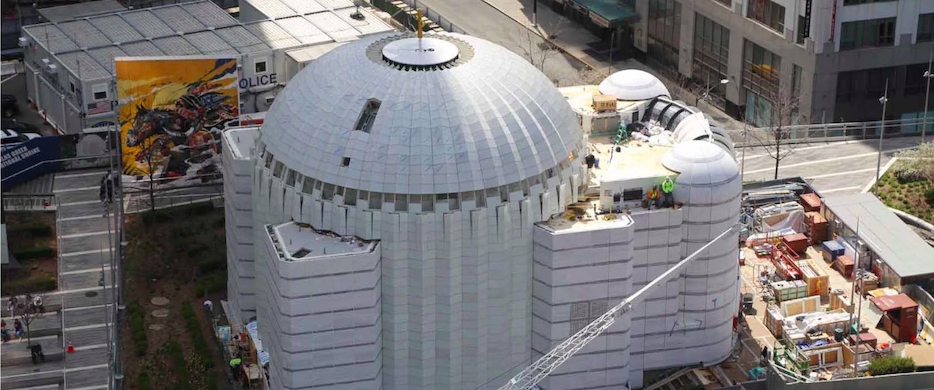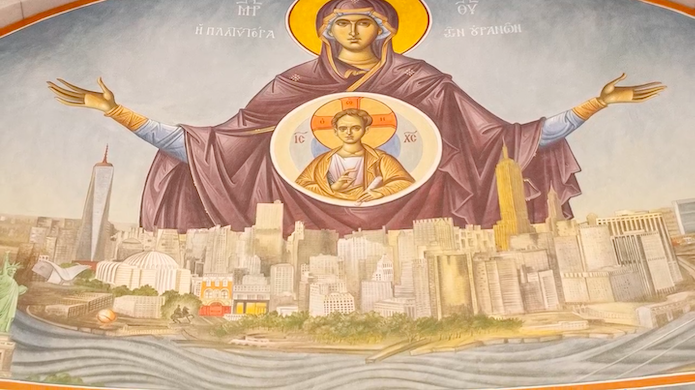21 Years After 9/11 Attacks, a Greek Church Rises and Shines at Ground Zero
The new church, designed by the Spanish architect Santiago Calatrava, is at a slightly different location, 130 Liberty St., and looks over the World Trade Center memorial plaza.

When the tallest temples of commerce to ever grace New York City were felled in the terrorist attacks of September 11, 2001, the force of destruction also took down a tiny house of worship: the much-loved Saint Nicholas Greek Orthodox Church at the foot of the World Trade Center’s South Tower. Some two decades later, a new one is set to rise as both a Greek church and a national shrine on that hallowed ground in Lower Manhattan.
With an aesthetic that marries audaciousness and elegance, the new Saint Nicholas Greek Orthodox Church was formally consecrated on the Fourth of July and will open to the public later this summer.
Saint Nicholas is the sole house of worship at Ground Zero. The original was founded by Greek immigrants in 1916. New arrivals to America, after making their way through Ellis Island, would come to the church at 155 Cedar St., in Manhattan’s Financial District, to light a candle of thanks to Saint Nicholas, who in Greek Orthodox tradition is the patron saint of seafarers and travelers. The new church, designed by the Spanish architect Santiago Calatrava, is at a slightly different location, 130 Liberty St., and looks over the World Trade Center memorial plaza.

Much symbolism is packed into the gleaming white structure. Mr. Calatrava also designed the Oculus terminal station nearby, and though vastly different in function, there are stylistic echoes. Both invite light and suggest openness in contrast to the confines, perceived and real, of the crowded city. The church’s walls are made from Pentelic marble, hacked out of the slopes of Mount Penteli near Athens. Greece’s Parthenon, an edifice that has endured its fair share of onslaughts over the years, is made of marble from the same mountain.
The new Saint Nicholas’s dome is an intentional evocation of the Hagia Sophia, which is now a mosque in Istanbul but was the landmark Christian cathedral when the city was Constantinople. Mr. Calatrava’s deferential nods to history also come with a whiff of something more daring: the dome is transparent and will light up at night. There are poignant interior touches too.
The Reverend Andreas Vithoulkas, the protopresbyter of the Ecumenical Throne of Saint Nicholas National Shrine, told the website Northjersey.com that “the iconography will be extraordinary; we have two monks from Mount Athos in Greece that came here to paint the interior with traditional icons, but the icons will also include many scenes and events from 9/11.”

In addition to being a church, it is a “a memorial to all the victims of 9/11 who perished in the terrorist attacks,” Mr. Vithoulkas said, adding: “It will be a place where all people can pray and practice their faith in addition to being a place of worship for the Greek Orthodox community. It stands as a symbol of freedom and of hope.”
His All-Holiness Ecumenical Patriarch Bartholomew commented that “the design is a tribute to the glorious beauty of Orthodox Christianity, of Hagia Sophia and Chora, as well as an acknowledgment of the present reality of a cosmopolis in the 21st century.” Chora is the Greek word for the main village or town on a Greek island, often situated on a hill — where typically there is at least one church. As for cosmopolis, the uniquely worldly metropolis that is New York City fits that bill pretty well.
President Biden echoed these reverential sentiments prior to the consecration of the new church. In May, while the Greek prime minister, Kyriakos Mitsotakis, was in the nation’s capital to address a joint session of Congress, Mr. Biden said “there’s no greater symbol of the faithfulness and perseverance of the community than seeing Greek Americans proudly celebrate the reconstitution and re-consecration of the Saint Nicholas Greek Orthodox Church and National Shrine.” He added then that “in rebuilding that sacred home of the Greek Orthodox Church and the Greek American community, [they] reaffirmed that even in the deepest, darkest days we always have hope for the future. Always.”

